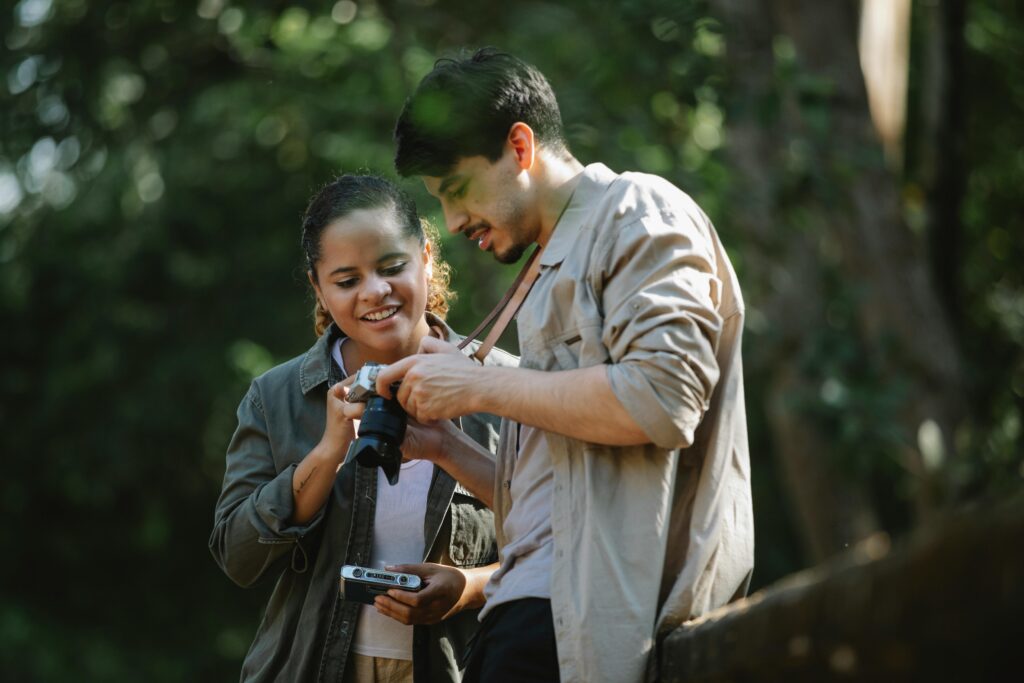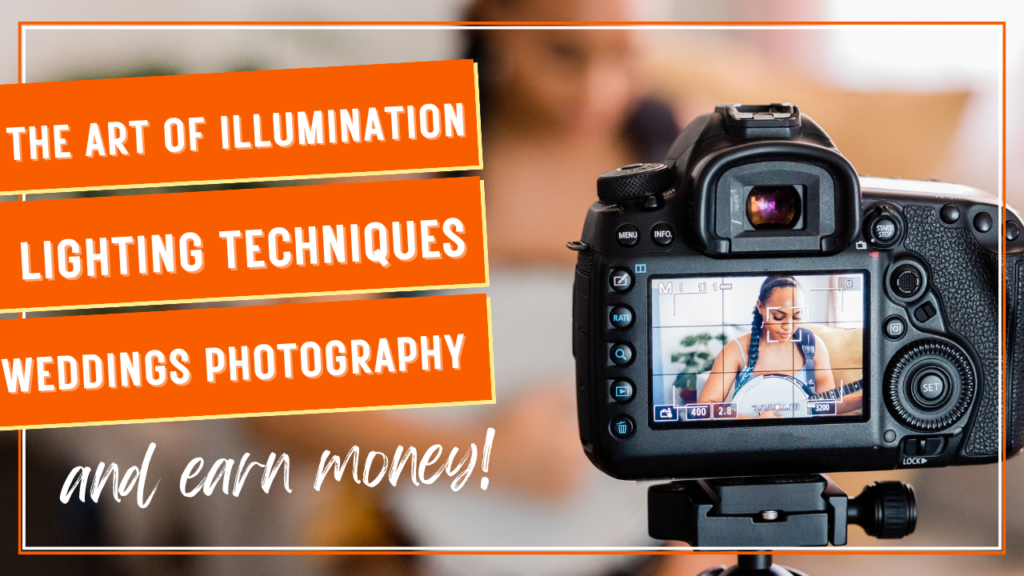Capturing the magic of weddings through lighting techniques for weddings just skill with a camera. One of the most crucial elements that can make or break your wedding photographs is lighting. Whether you’re shooting in natural light or setting up your own, mastering various lighting techniques can elevate your wedding photography to new heights.In this guide, we’ll explore essential lighting techniques tailored to immortalize the beauty and emotion of wedding moments.
Natural Light Photography:
When shooting weddings, natural light can be a photographer’s best friend. The soft, diffused light during the golden hour or the gentle glow of sunlight filtering through trees can create enchanting images.

To make the most of natural light:
Position your subjects strategically to make use of flattering light.
Use reflectors to bounce light onto your subjects, filling in shadows and creating a more balanced look.
Avoid harsh midday sun by seeking shaded areas or using diffusers to soften the light.
Off-Camera Flash:
Off-camera flash allows photographers to have greater control over lighting conditions, particularly in low-light venues or when shooting indoors. By placing the flash at different angles and distances from the subject, you can create depth and dimension in your photos.
Some tips for using off-camera flash:
Experiment with different flash modifiers such as softboxes or umbrellas to control the quality of light.
Use a technique called “dragging the shutter” to balance ambient light with flash, resulting in a more natural-looking scene.
Don’t be afraid to get creative with flash placement to achieve dramatic effects, such as backlighting or side lighting.
Continuous Lighting:
Continuous lighting, whether through LED panels or traditional tungsten lights, offers a constant light source that allows for real-time adjustments and previews of the lighting setup. This can be particularly useful during indoor ceremonies or receptions where lighting conditions may vary.
Consider the following when using continuous lighting:
Adjust the color temperature of your lights to match the ambient lighting for a cohesive look.
Use diffusers or soft boxes to soften the light and minimize harsh shadows.
Experiment with different lighting setups, such as three-point lighting, to sculpt your subjects and create depth in your photos.
Creative Lighting Techniques:
Weddings provide ample opportunities for creative lighting techniques that can add a touch of magic to your photos. From fairy lights and sparklers to light painting and silhouette shots, the possibilities are endless. Here are some ideas to
spark your creativity:
Incorporate sparklers into your couple portraits for a romantic and whimsical feel.
Experiment with long exposures and light painting to create stunning night-time portraits.
Use silhouettes against a bright background to capture the outline of your subjects in a dramatic fashion.
Conclusion:
Mastering lighting techniques is essential for capturing the beauty and emotion of weddings through photography. Whether you’re harnessing the soft glow of natural light or creating your own lighting setup, understanding how light interacts with your subjects can elevate your wedding photos to works of art. By experimenting with different techniques and continuously honing your skills, you’ll be able to create stunning images that will be cherished for a lifetime.
